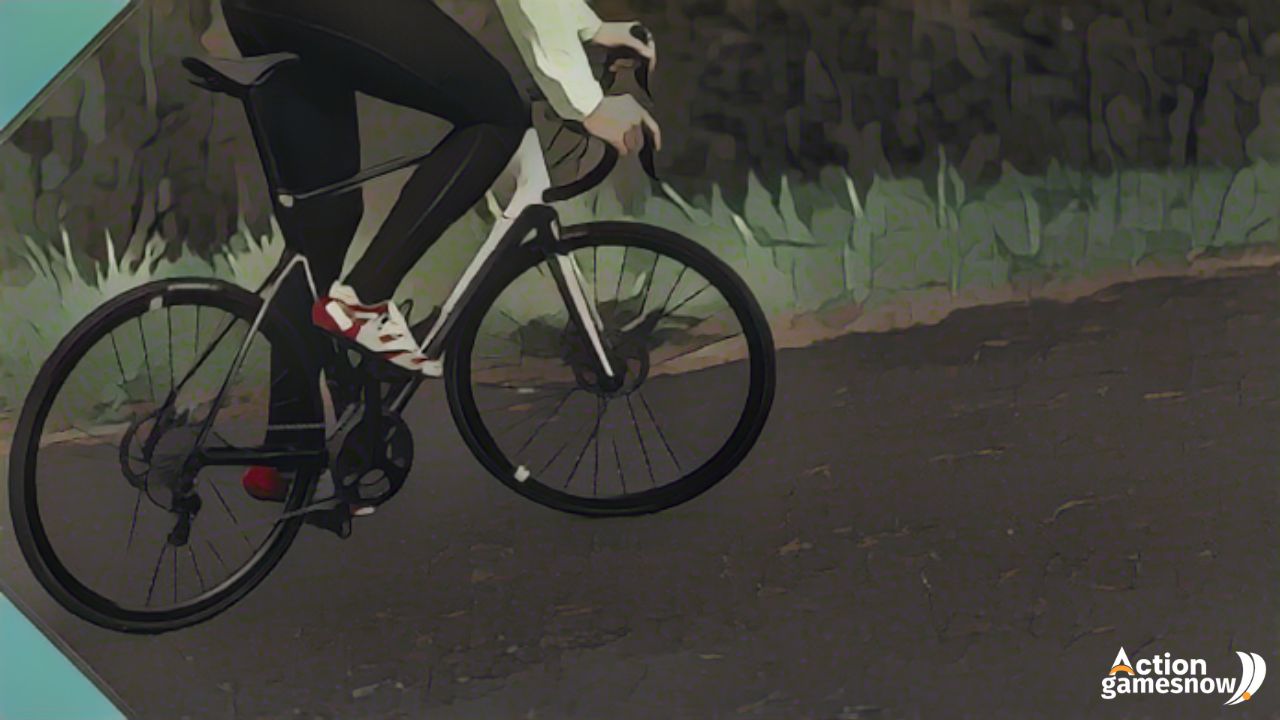Top 10 Cycling Mistake: We all make mistakes, no matter how long we’ve been cycling or how many kilometers we’ve put on our legs. It’s how we learn, what’s called the “experiential learning cycle.” So, before you make any more mistakes, take a look at these common ones. Hopefully, they’ll help you out and may even make you a better cyclist.
Height of a saddle
Aside from having soft tires, one of the main reasons you might not be a good rider is that your saddle may be too high or too low. If your saddle is too high or too low, the power from your legs won’t be sent to the bike in the right way.
Do the following to figure out how high your saddle should be:
• Keep your heel on the pedal as you ride.
• Your leg should be almost straight when it’s at the bottom of the pedal stroke, but not quite.
• Set the height of your saddle to this.
• Then, when you ride with your foot in the “normal” position, with the ball of your big toe over the center of the pedal axle, you should be able to pedal well and at the right height.
• Don’t be afraid, though, to change things a little higher or lower from here on out if you need to.
• While sitting in the saddle, you should still be able to touch the ground with your toes on both sides of the bike.
Not getting enough gas for a ride
When a runner says, “I hit the wall,” they mean that their body has run out of fuel or energy and has come to a stop. Most cyclists have experienced this, even the pros, and call it a “bonk.” When going on a ride, take a little more food than you think you’ll need and maybe two bottles.
This is especially important if you’re going to be in a remote area where it might be hard to find a place to buy supplies. Plan ahead, because it’s better to have some food or drink on hand than to risk bonking.
Slowing Down in Curves
This is a very common mistake for cyclists, especially those who are just starting out. The safest and most effective way to brake is before the corner, not as you are going around it. If you brake as you are going around the corner, your bike could lock up, you could lose control, and you could crash.
The safest and most effective way to make a turn is to brake before the turn, not while you are making the turn.
To safely brake, you should do it right before a turn, making sure to do it gently but enough to slow you down so you can make the turn safely. Remember to brake earlier when it’s wet because it will take longer to stop, especially if you have caliper brakes instead of disc brakes.
No Tools or Spares
When going on a ride, you should make sure you have a few spare parts and tools that could get you home if something goes wrong. As a rule of thumb, I always bring the following things, which you can put in a saddlebag under
your saddle or spread out in your pockets:
• 2 No. of inner tubes
• Tire levers
• Patches (instant stick-on types are best)
• Mini Pump (or CO2 inflator) • Multi-tool (ideally with chain link extractor)
Hardly Putting on the Brakes
Don’t just “grab” the brakes hard when you need to stop. You should brake in a controlled way so that your weight is spread out as evenly as possible on the bike. Stopping quickly can cause you to lose control and stability, and it can even send you flying over the handlebars in some cases.
To stop safely, you should look far ahead, plan ahead, and brake steadily with both the front and back brakes, putting a little more pressure on the front brake.
Riding Too Far, Too Hard, Too Soon
Know your limits and stick to them. There’s nothing wrong with having big goals, but the best way to reach them is to work steadily towards them. Cycling is a hard sport that is also very fun.
Don’t lose your confidence by trying to do too much too soon. Instead, try to train steadily over time instead of trying to go all out from the start.
Poor Bike Maintenance
Again, this is basic information, but it is important from both a convenience and a safety point of view. If you don’t want to be embarrassed by having to be rescued from the side of the road, make it a habit to check your bike and keep it in good shape.
Pay special attention to the brakes, gears, handlebars, tires, and tires, and keep the chain clean and oiled. Getting your bike serviced on a regular basis makes sense, especially if you aren’t sure about a more complicated part. It’s best not to take a chance.
Clothing That Doesn’t Fit
This is another part of cycling that you need to think about ahead of time. If you don’t, you could end up miserable or, even worse, in a lot of trouble. Make sure you know what the weather is going to be like for the whole ride. Think about how long the ride you want to take will be and if the weather is likely to change.
When it’s colder, it’s better to wear a little more than you need than too little.
In colder weather, it’s better to slightly overdress than to underdress, since you can always take off layers if you get too hot or unzip to let cool air in. On the other hand, if you only wear shorts and short sleeves and then get caught in a rainstorm, your body temperature can drop quickly, so always bring a windproof/waterproof layer and/or gilet that you can put in your pocket.
This is even more important if you are riding in a hilly area with big changes in elevation, where you might be very warm going uphill but cold going downhill because of Windchill.
Not Making Good Use of Gears
Gears help your power work better on different types of terrain, so make sure you use them right. Most bikes will have more than 20 gears, which gives you a wide range of ratios to choose from.
It might take you a while to figure out what gearing works best for you, but if you’re going 10 mph on a flat road, you shouldn’t be pedaling so hard that your body starts to rock from side to side. On the other hand, you shouldn’t try to turn a big gear so fast that every time you pedal it feels like lifting weights and your knees start to hurt.
As a general rule, on the flat, you should try to keep your cadence between 70 and 90 rpm (pedal revolutions per minute). Make sure to shift down to the easier gears when the road goes uphill and up to the harder gears when the road goes downhill. This may seem like common sense, but the number of people I see struggling in the wrong gear tells me that it’s more common than you think.
Squeaking Chain
A squeaking chain can be annoying to you and other riders, and it won’t do your bike chain or cassette (the cogs on the back hub) much good either, since the sound is caused by friction that wears down your parts.
So, put some light oil or chain lube on (there are many kinds for riding in the rain or dry), wipe off the extra, and you’re ready to go. If there are no more squeaks, your chain and other parts will be grateful and last a lot longer than they might have otherwise.









Comments are closed.